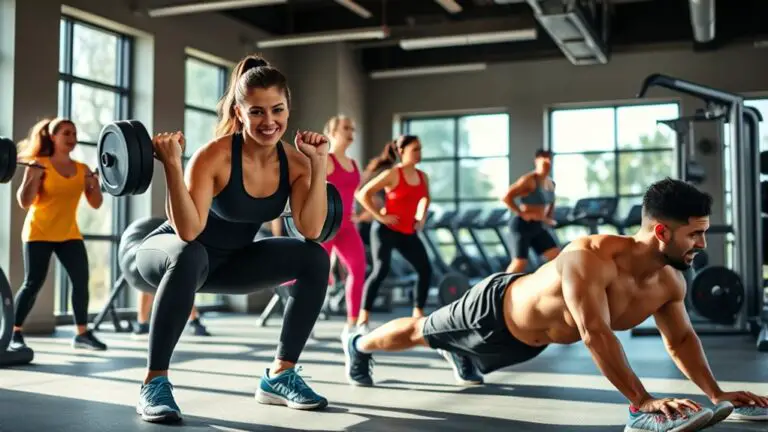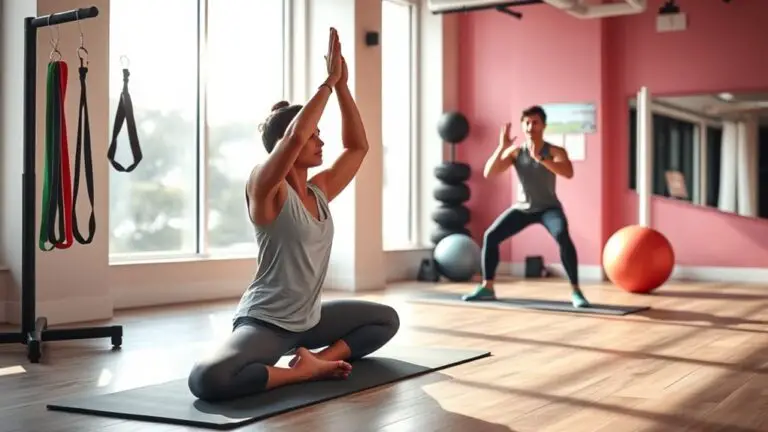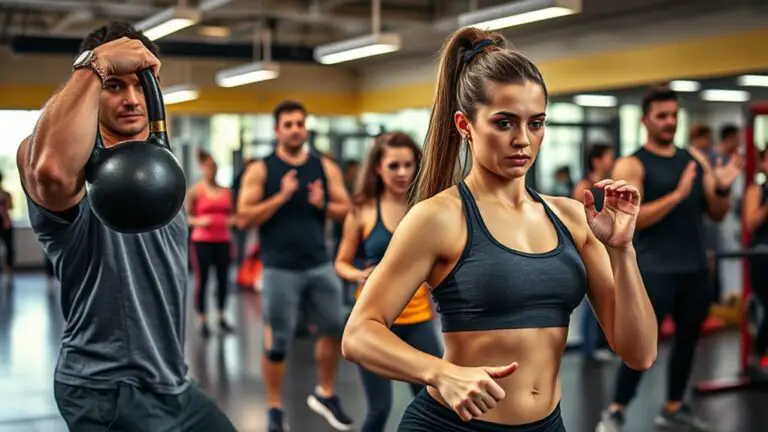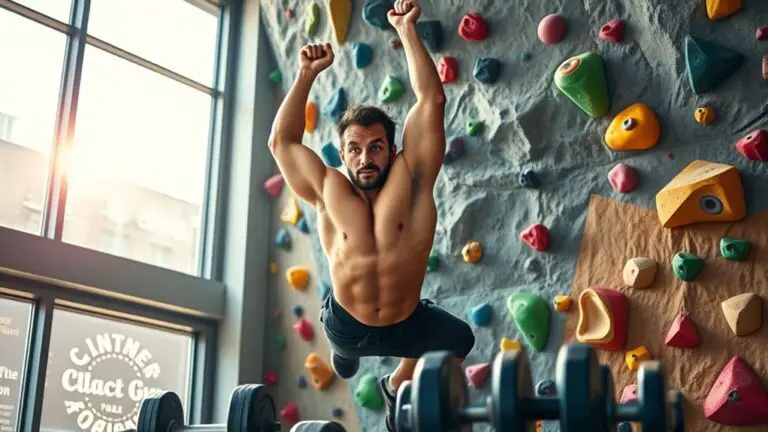How to Use Gym Training to Improve Skiing Ability
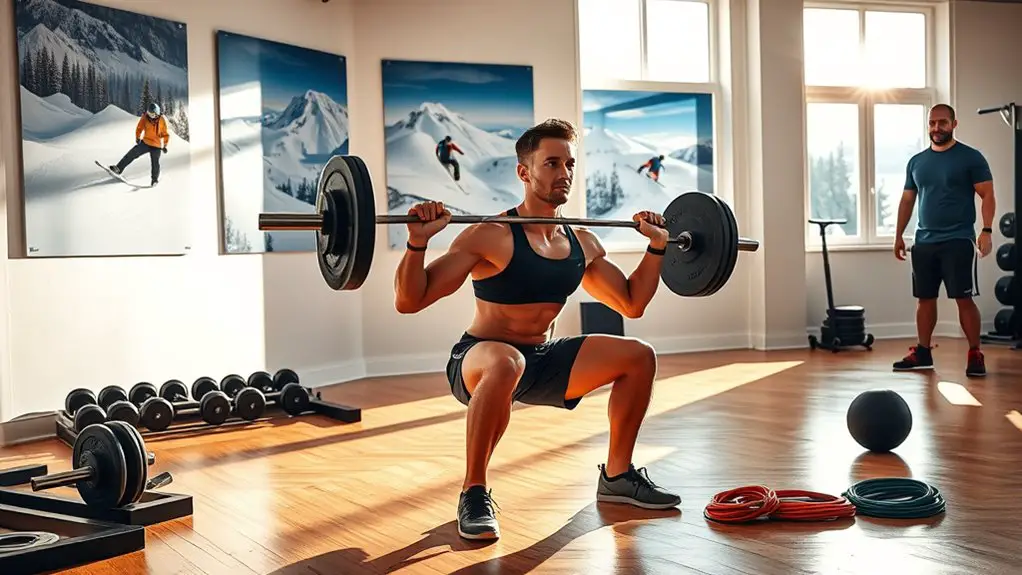
To improve your skiing ability with gym training, focus on strength, endurance, and flexibility. Incorporate exercises like box jumps for explosive power and planks for core stability. Don’t forget about dynamic stretching to enhance mobility and foam rolling for recovery. Include cardio workouts to build stamina for long ski days. Aim for a ski-specific workout plan that targets key muscle groups and mimics skiing movements. Keep at it, and you’ll uncover even more ways to enhance your performance.
The Importance of Strength Training for Skiers
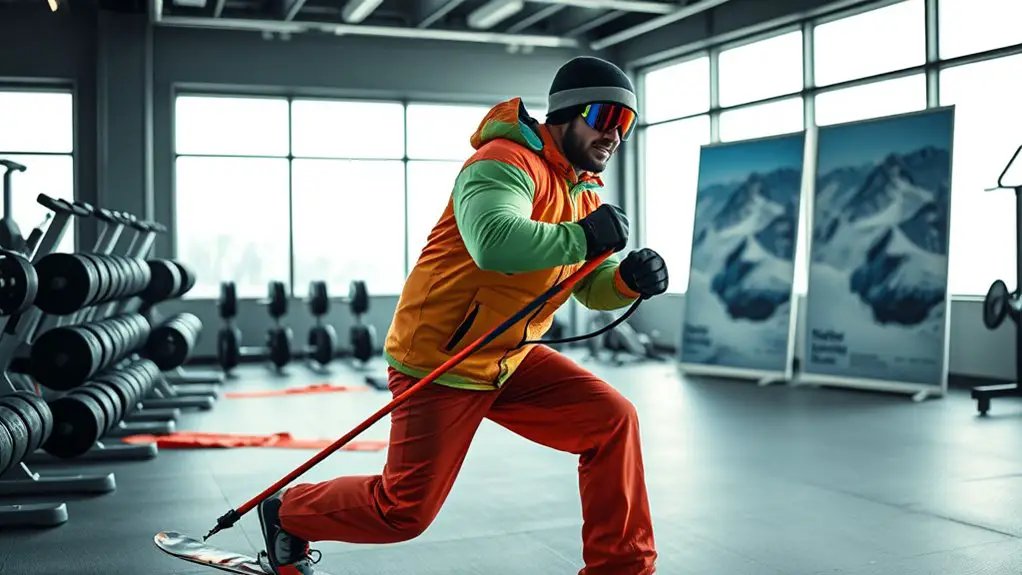
Strength is an essential foundation for any skier aiming to enhance their performance on the slopes. When you focus on strength training, you reveal numerous strength benefits that directly translate to better skiing. Increased muscle power allows for quicker turns, improved balance, and enhanced endurance, enabling you to tackle challenging runs with confidence.
Moreover, strength training plays a vital role in injury prevention. Skiing places significant stress on your body, particularly your knees, back, and core. By building strength in these areas, you create a more resilient physique that can withstand the demands of skiing. This not only helps reduce the risk of common skiing injuries but also enhances your overall stability and control on the slopes.
Incorporating a strength training regimen into your routine is a smart investment in your skiing future. You’ll not only improve your performance but also enjoy a safer and more fulfilling skiing experience. Additionally, focusing on progressive overload during your strength workouts can maximize muscle growth and enhance your skiing ability.
Key Exercises to Enhance Skiing Performance
Building on the foundation of strength training, focusing on specific exercises can greatly enhance your skiing performance. Incorporating plyometric exercises, like box jumps and squat jumps, can improve your explosive power, vital for quick turns and jumps on the slopes. These exercises not only build strength but also increase your agility, helping you navigate varied terrain with ease.
Additionally, core stability is essential for maintaining balance and control while skiing. Engage in exercises like planks and Russian twists to strengthen your core muscles. A strong core allows you to transfer energy efficiently from your upper body to your lower body, ensuring better performance during your runs. You might also consider incorporating exercise modifications to adapt to your fitness level and ensure safe training.
Incorporating these targeted exercises into your training routine will prepare your body for the demands of skiing, enhancing both your endurance and overall performance. So, make the most of your gym sessions to become a more skilled and confident skier!
Flexibility and Mobility: Preparing Your Body for the Slopes
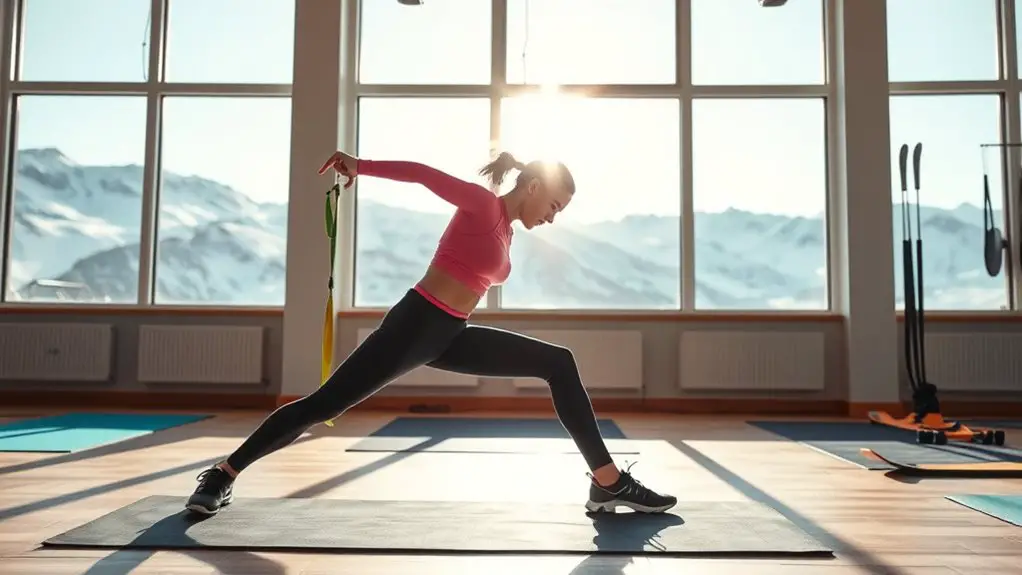
While many focus on strength and endurance for skiing, neglecting flexibility and mobility can hinder your performance on the slopes. To truly excel, you need a body that moves fluidly and adapts quickly to shifts in terrain. Incorporating dynamic stretching into your warm-up routine can notably enhance your range of motion, preparing your muscles for the demands of skiing. Exercises like leg swings and arm circles increase blood flow and guarantee your joints are ready for action.
Additionally, don’t underestimate the power of foam rolling. This technique helps release muscle tightness and improves circulation, which is vital for recovery and injury prevention. By regularly using a foam roller, you can target specific muscle groups, enhancing your overall flexibility. Prioritizing these practices will not only boost your skiing performance but also contribute to a more enjoyable experience on the slopes. So, make flexibility and mobility a key part of your training regimen!
Building Endurance for Longer Ski Days
After laying a solid foundation with flexibility and mobility, the next step is to enhance your endurance for those long days on the slopes. Building stamina is essential, as it allows you to maintain energy and focus throughout your skiing adventures. Incorporate cardio routines like running, cycling, or swimming into your weekly workouts; these activities boost your heart rate and improve overall cardiovascular health. Aim for at least 30 minutes of moderate to high-intensity cardio, three to five times a week.
Additionally, implement stamina techniques such as interval training, where you alternate between high-intensity bursts and lower-intensity recovery periods. This approach not only enhances endurance but also simulates the demands of skiing, where you’re constantly shifting between different intensity levels. By focusing on these endurance-building strategies, you’ll find yourself more prepared to tackle those long runs and enjoy every moment on the mountain.
Creating a Ski-Specific Workout Plan
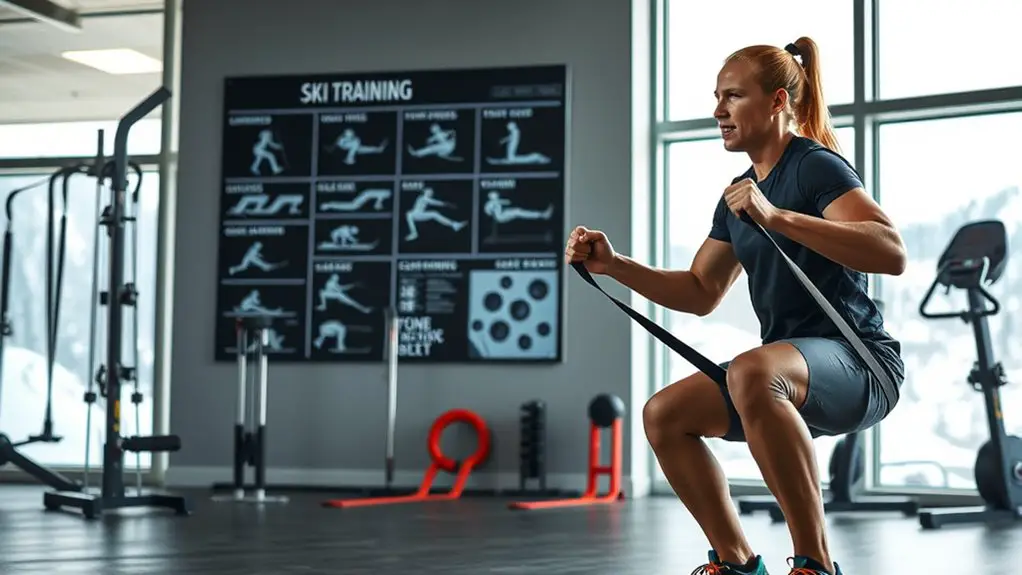
To maximize your skiing performance, creating a ski-specific workout plan is essential, as it targets the muscles and skills you’ll be using on the slopes. Start by identifying key areas to focus on, ensuring your workouts are efficient and effective. Consider incorporating the following elements:
- Leg strength exercises to enhance stability and control.
- Core workouts to improve balance and posture.
- Plyometric drills for explosive power and agility.
- Cardiovascular training to boost endurance for longer runs.
- Ski drills that mimic on-slope movements to refine technique.
Incorporating pistol squat progressions can significantly improve your leg strength and balance for skiing. Aim for a workout duration of at least 60 minutes, 3-4 times a week. By sticking to this plan, you’ll increase your strength and endurance, making you a more confident skier. Consistency is key—stay motivated and track your progress to see improvements in your skiing ability!
Frequently Asked Questions
How Long Should I Train Before Skiing Season Begins?
Did you know that athletes who engage in at least 8 weeks of targeted training before their season report a 30% improvement in performance? For skiing, it’s best to start your preseason preparation around 6 to 8 weeks prior to hitting the slopes. This training duration allows you to build strength, endurance, and flexibility, ensuring you’re ready for the challenges ahead. So, don’t wait—get moving and maximize your ski season potential!
What Should I Eat for Optimal Skiing Performance?
For ideal skiing performance, you need to focus on carbohydrate timing and hydration strategies. Eating complex carbs before hitting the slopes fuels your energy stores, while quick-digesting carbs during breaks can help maintain your stamina. Don’t forget to hydrate; staying properly hydrated enhances your endurance and cognitive function. A well-balanced diet rich in nutrients will keep you at your best, allowing you to tackle those challenging runs with confidence and vigor.
Can I Train if I Have Previous Injuries?
Absolutely, you can train with previous injuries! Just remember, prioritizing proper rehabilitation is essential. Start with a strength assessment to identify your limits and capabilities. Focus on low-impact exercises that build strength without straining your injury. Gradually increase intensity, listening to your body’s signals. Staying motivated is vital—visualize your progress and celebrate small victories. With the right approach, you’ll bounce back stronger and ready for new challenges on the slopes!
How Often Should I Cross-Train With Other Sports?
Cross-training can greatly enhance your overall fitness and performance. You should aim for at least two to three sessions a week, incorporating skiing intervals and strength circuits. This approach will not only boost your endurance but also strengthen the muscle groups essential for skiing. Mixing in other sports keeps your routine fresh and helps prevent burnout. Remember, consistency is key, so find activities you enjoy to stay motivated and engaged.
What Equipment Do I Need for Gym Training?
Imagine you’re preparing for a ski trip, and you want to feel strong and agile. For effective gym training, you’ll need basic equipment like dumbbells for strength training and a stationary bike or treadmill for cardio workouts. These tools will help you build endurance and muscle strength, essential for tackling those slopes. Start with a well-rounded routine, and you’ll notice improvements in your overall fitness and skiing performance.
